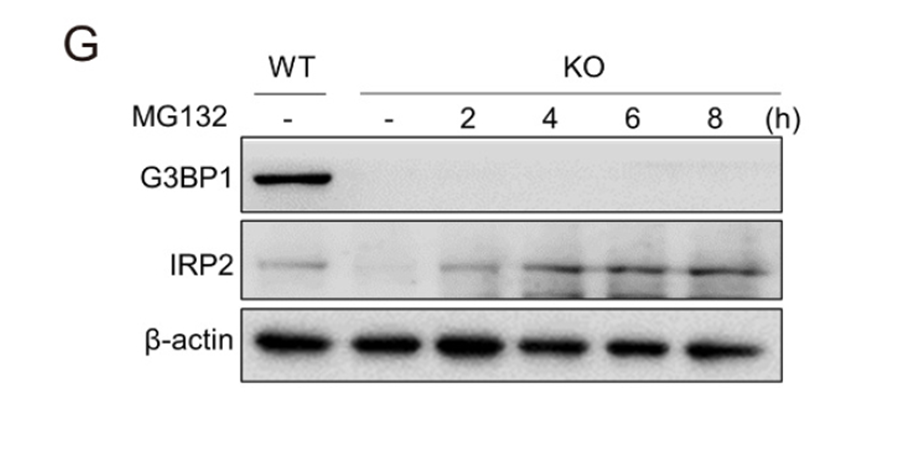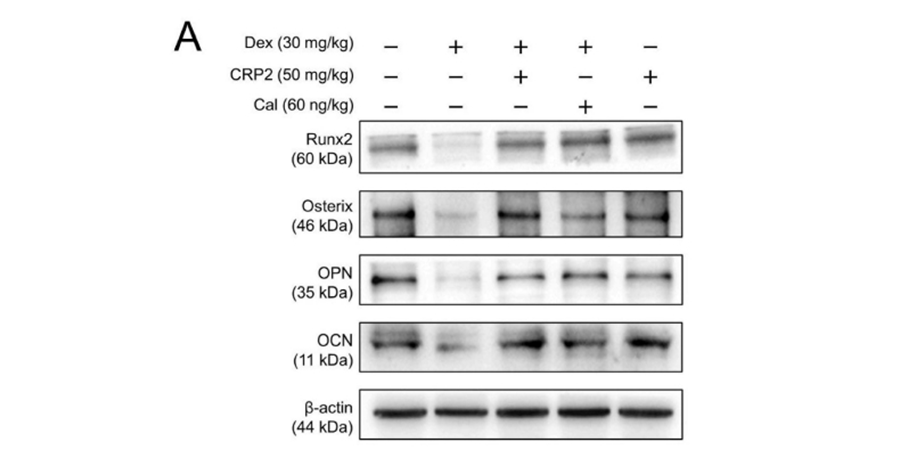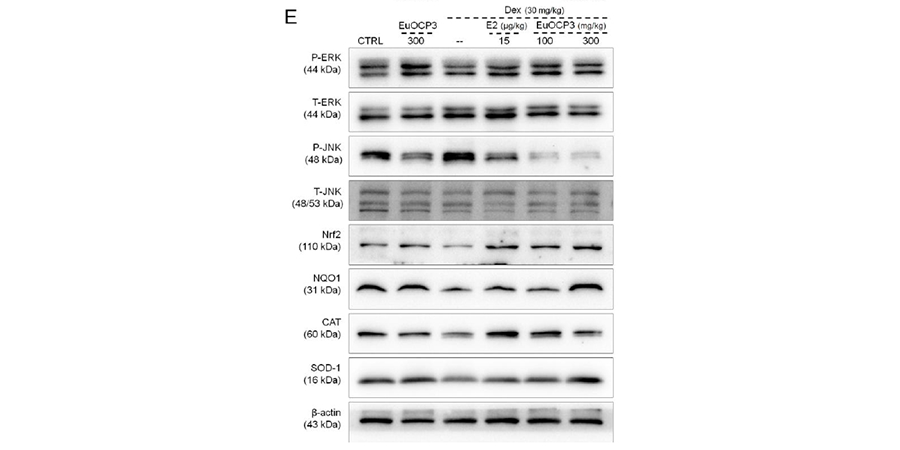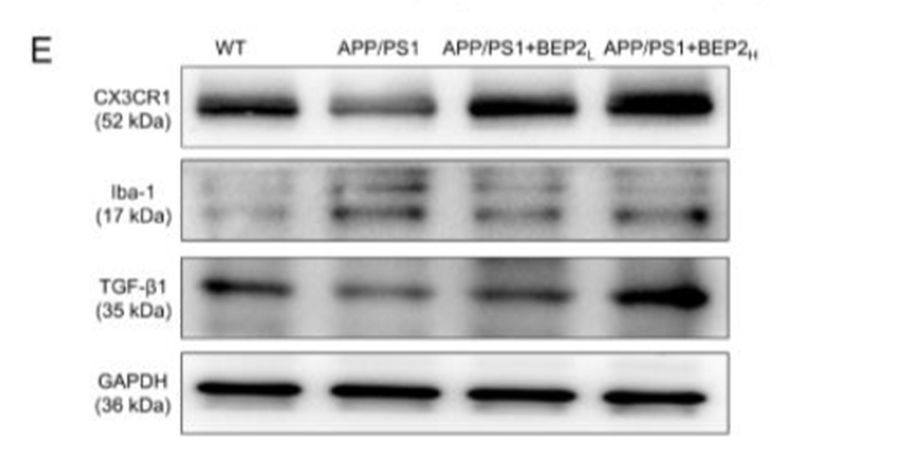Ultra High Sensitivity ECL Kit |
| Catalog No.GK10008 |
Luminol-based chemiluminescent kit for detection of horseradish peroxidase (HRP)-labeled antibodies and their associated antigens.
Products are for research use only. Not for human use. We do not sell to patients.

Sample solution is provided at 25 µL, 10mM.
- Mol Med Rep 24.6 (2021): 1-9.PMID:34713293
- Bioengineered 12.2 (2021): 11664-11676.PMID:34872453
- Bioorg Chem 119 (2022): 105469.PMID:34915285
- Bioengineered 13.1 (2022): 1518-1529.PMID:34986734
- Eur J Pharmacol 916 (2022): 174729.PMID:34973190
- J Agric Food Chem 70.50 (2022): 15763-15775.PMID:36472370
- Exp Physiol 107.6 (2022): 562-574.PMID:35365954
- Mol Cell Biochem 477.7 (2022): 2001-2013.PMID:35394639
- Front Cell Dev Biol 10 (2022): 850708.PMID:35592246
- Poultry Sci 101.10 (2022): 102024.PMID:35986948
- BBA-Mol Cell Res 1869.10 (2022): 119323.PMID:35793738
- Exp Ther Med 24.3 (2022): 1-10.PMID:35978933
- Chem-Biol Interact 365 (2022): 110080.PMID:35926579
- Mediat Inflamm 2022 (2022).PMID:36262544
- J Ethnopharmacol 298 (2022): 115661.PMID:36002086
- Nutrients 14.17 (2022): 3477.PMID:36079733
- Toxicology (2022): 153336.PMID:36126895
- Int Immunopharmacol 113 (2022): 109326.PMID:36252487
- Nat Prod Commun 18.8 (2023): 1934578X231194127.
- Tissue Cell 80 (2023): 102001.PMID:36565506
- Carbohyd Polym 306 (2023): 120601.PMID:36746570
- J Orthop Surg Res 18.1 (2023): 86.PMID:36737821
- J Inflamm Res (2023): 617-637.PMID:36820147
- Exp Ther Med 25.4 (2023): 1-13.PMID:37021067
- Int Immunopharmacol 118 (2023): 110131.PMID:37023700
- Mol Immunol 157 (2023): 176-185.PMID:37044043
- bioRxiv (2022): 2022-06.
- Eur J Pharmacol 949 (2023): 175725.PMID:37068578
- Exp Physiol 107.6 (2022): 562-574.PMID:35365954
- Folia Histochem Cyto 61.1 (2023): 47-55.PMID:36880682
- Front Pharmacol 13 (2022): 1002269.PMID:36339623
- Front Oncol 12 (2022): 858598.PMID:35321435
- Mol Immunol 157 (2023): 176-185.PMID:37044043
- Int J Biol Sci 19.8 (2023): 2599.PMID:37215997
- Oncol Rep 49.6 (2023): 1-13.PMID:37083067
- Nutrients 14.20 (2022): 4421.PMID:36297105
- Open Life Sci 18.1 (2023): 20220570.PMID:36852401
- Scienceasia 48.5 (2022).
- Poultry Sci 103.1 (2024):103247.PMID:37980731
- Molecules 28.13 (2023): 4984.PMID:37446646
- Bmc Cancer 23.1 (2023): 662.PMID:37452291
- Anal Biochem 682 (2023): 115339.PMID:37805041
- Int J Mol Sci 24.19 (2023): 14595.PMID:37834044
- Nutrients 15.17 (2023): 3799.PMID:37686830
- Sci Rep Uk 13.1 (2023): 14339.PMID:37658227
- J Med Chem 66.18 (2023): 13103-13115.PMID:37724909
- Pharm Biol 61.1 (2023): 1446-1453.PMID:37675874
- Bmc Nephrol 24.1 (2023): 314.PMID:37884904
- Food Funct (2023).PMID:38031758
- J Hazard Mater (2023): 133038.
- Carbohyd Polym (2023):121709.
- Food Funct (2024).PMID:38031758
- Int J Biol Macromol (2023):128819.PMID:38104691
- Neural Regen Res 19.9 (2024):2050-2056.PMID:38227535
- Aging 16.1 (2024):169-190.PMID:38175693
- Cell Signal (2024):111097.PMID:38355078
- Cytotechnology (2024):1-13.PMID:37787035
- J Cancer 15.5 (2024):1429.PMID:38356720
- Metabolites 14.2 (2024):117.PMID:38393010
- Curr Eye Res 49.2 (2024):180-187.PMID:38014534
- Int J Biol Macromol (2024):130355.PMID:38395281
- J Inorg Biochem (2024):112515.
- Transl Stroke Res (2024):1-20.PMID:38485864
- Exp Ther Med 27.5 (2024):1-16.
- Int Immunopharmacol 132 (2024):111962.PMID:38565042
- Biomed Pharmacother 174 (2024):116557.PMID:38583337
- Oncol Lett 28.1 (2024):1-13.
- Aging (Albany NY) 16.1 (2024):169.PMID:38175693
- Nutrients 16.13 (2024):2159.
- Heliyon (2024).
- Int J Biol Macromol (2024):133865.PMID:39019356
The core principle of ECL reagent detection is the luminescence of the oxidation reaction: Luminol (lumino) is the main component of the luminescence substrate. Under alkaline conditions, it is catalyzed by H2O2 to generate 3-amino ozone. The excited state intermediate of phthalic acid emits photons when it returns to the ground state. The maximum emission wavelength is 425 nm. The photon signal can be captured by X-ray film or CCD imager.
The GlpBio Ultra High Sensitivity ECL kit can oxidize luminol in the presence of HRP and peroxide to detect within the femtogram range of antigens. This reaction produces prolonged chemiluminescence, which can be seen on X-ray film or digital imaging systems. The GlpBio Ultra High Sensitivity ECL kit can produce a powerful, long-lived signal. Coupled with a very low background level, it can extend the exposure time to detect low-abundance proteins.
Average Rating: 5 (Based on Reviews and 30 reference(s) in Google Scholar.)
GLPBIO products are for RESEARCH USE ONLY. Please make sure your review or question is research based.
Required fields are marked with *








